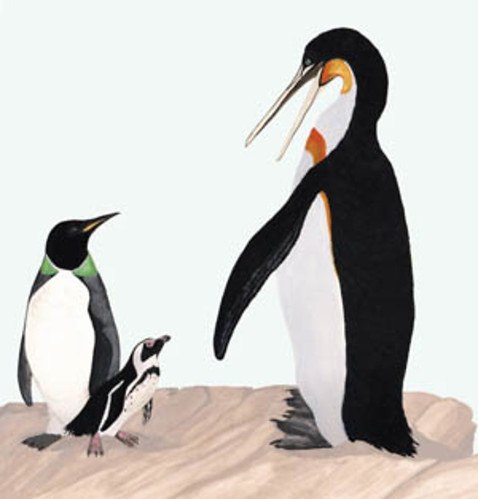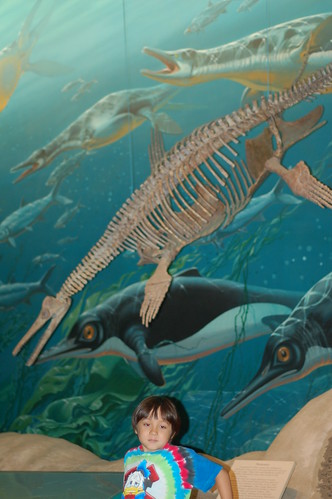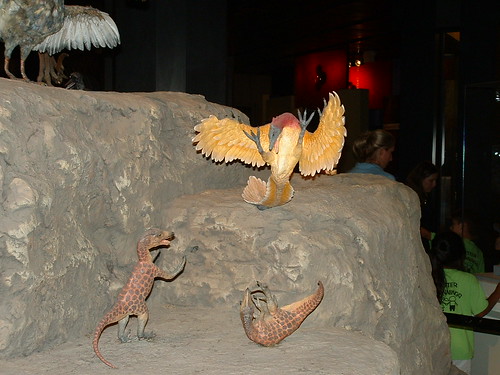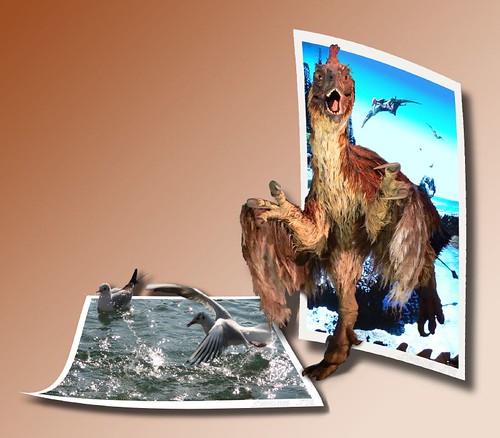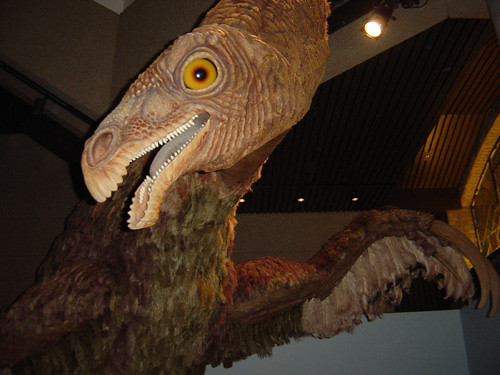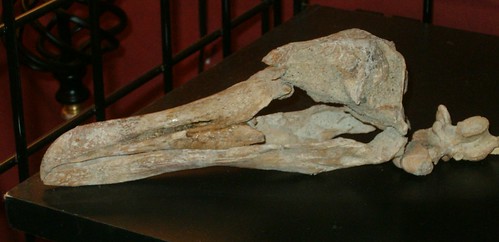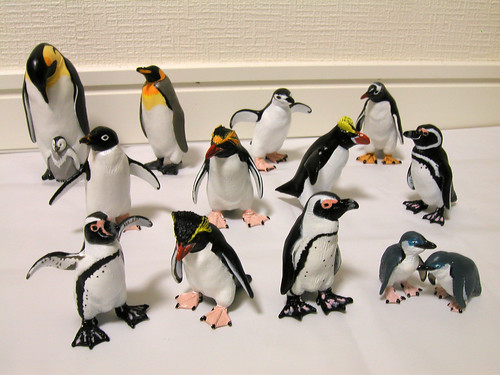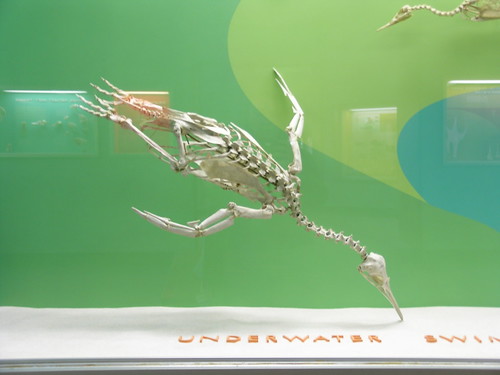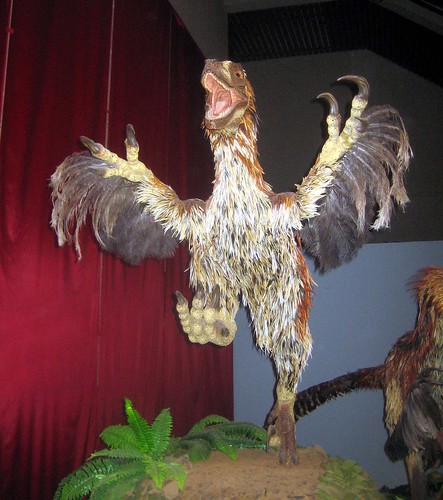
Artist: Michael Skrepnick 2005.
Jan. 19, 2005
Relatives of Living Ducks and Chickens Existed Alongside Dinosaurs More Than 65 Million Years Ago
A reconstruction by well-known dinosaur artist Michael Skrepnick shows Vegavis in the immediate foreground with a duckbill dinosaur (hadrosaur) in the background.
A reconstruction by well-known dinosaur artist Michael Skrepnick shows Vegavis in the immediate foreground with a duckbill dinosaur (hadrosaur) in the background. Copyright Michael Skrepnick 2005.
Newly published North Carolina State University research into the evolution of birds shows the first definitive fossil proof linking close relatives of living birds to a time when dinosaurs roamed the earth.
Research by paleontologist Dr. Julia A. Clarke, an assistant professor in the marine, earth and atmospheric sciences department at NC State, and colleagues provides unprecedented fossil proof that some close cousins to living bird species coexisted with dinosaurs more than 65 million years ago. Information from a new avian species called Vegavis iaai indicates that these birds lived in the Cretaceous period and must have survived the Cretaceous/Tertiary (K/T) mass extinction event that included the disappearance of all other dinosaurs.
Analysis of fresh evidence from computed tomography (CT) scans of the fossil – which uncovered new bones deep within the rock matrix – and recovery of latex peels made of the specimen just after its discovery in Antarctica in 1992 revealed its importance to avian evolution and that it represented a new species. This partial skeleton is the most complete specimen from the Cretaceous to be found to have its evolutionary relationship to a living bird group. These new data show Vegavis is within the group Anseriformes, which includes ducks and geese.
The research is published in the Jan. 20 edition of the scientific journal Nature.
One half of the Vegavis iaai specimen (left) and the volumetric rendering from the computed tomography (CT) data (right).

The question of whether relatives of living birds existed alongside non-bird dinosaurs has evoked intense recent controversy in scientific circles. Some scholars, arguing from some “molecular clock” models and new DNA sequence data as well as the distribution of living bird groups, have concluded that relatives of living birds must have existed alongside non-avian dinosaurs and survived the mass extinction of dinosaurs at the K/T boundary, about 65 million years ago. Until the discovery of Vegavis, fossil data to support this hypothesis was weak at best.
Other scientists have claimed this limited previous data was unreliable and that the fossil record showed no evidence of living bird lineages in the Cretaceous. In a “big bang” theory of bird evolution, these scientists have proposed that relatives of today’s birds came on the scene only after non-avian dinosaurs became extinct at the K/T boundary.
“We have more data than ever to propose at least the beginnings of the radiation of all living birds in the Cretaceous,” Clarke says. “We now know that duck and chicken relatives coexisted with non-avian dinosaurs. This does not mean that today’s chicken and duck species lived with non-avian dinosaurs, but that the evolutionary lineages leading to today’s duck and chicken species did.”
The fossil’s fragility – the specimen was damaged as it was being prepared for study – led to difficulties in conducting a full examination in 1992. Earlier this year, Clarke received a grant from the National Science Foundation to give the fossil – named for the location it was discovered (Vega Island in western Antarctica) and for the name of the party that made the discovery (the Instituto Antártico Argentino, or IAA) – a second look with a team of colleagues from Argentina and the United States.
Clarke and her fellow scientists conducted new analyses on the fragile partial skeleton. CT scans were performed on the fossil for the first time; these X-rays uncovered new bones in the rock matrix, including a number of vertebrae, pelvic bones, and arm and leg bones. The researchers also found the original latex peels – applied to the fossil before any other preparation had been done – that provided a mirror image of the bones originally exposed on the rock surface.
The newly discovered bones and latex peels allowed the scientists to compare features of Vegavis to other birds and determine its evolutionary relationships. Clarke and her colleagues used some of the largest data sets available and all placed Vegavis within the radiation of living birds – as most closely related to ducks and geese. Histological analysis of the bone tissues present in a cross section of a Vegavis arm bone not only indicates that Vegavis was an adult at the time of death but also supports inference of its evolutionary relationships from the independent phylogenetic results.
The data place Vegavis within Aves, which includes common ancestors of all living birds we have today and all its descendents – that is, the radiation of all living birds – and specifically within one group of Aves called Anseriformes, the waterfowl, which includes ducks, geese and allies. Within this group Vegavis is positioned close to the lineage leading to true ducks and geese, called Anatidae.
Clarke will now continue her search for more clues to the evolution of birds. “Looking to the Cretaceous for more parts of extant avian radiation is essential,” she says.
Funding for the research came from an NSF Office of Polar Programs Small Grant for Experimental Research.
- kulikowski -
An abstract of the Nature paper follows.
“Definitive Fossil Evidence for the Extant Avian Radiation in the Cretaceous”
Authors: Julia A. Clarke, North Carolina State University; Claudia P. Tambussi, Museo de la Plata-Conicet, La Plata, Argentina; Jorge I. Noriega, Centro de Investigaciones Cientificas y TTP-Conicet, Entre Rios, Argentina; Gregory M. Erickson, Florida State University; Richard A. Ketcham, University of Texas
Published: Jan. 20, 2005, in Nature
Abstract: Long-standing controversy surrounds the question of whether living bird lineages emerged after non-avian dinosaur extinction at the Cretaceous/Tertiary (K/T) boundary or whether these lineages coexisted with other dinosaurs and passed through this mass extinction event. Inferences from biogeography and molecular sequence data project major avian lineages deep into the Cretaceous period, implying their “mass survival” at the K/T boundary. By contrast, it has been argued that the fossil record refutes this hypothesis, placing a “big bang” of avian radiation only after the end of the Cretaceous. However, other fossil data – fragmentary bones referred to extant bird lineages – have been considered inconclusive. These data have never been subjected to phylogenetic analysis. Here we identify a rare, partial skeleton from the Maastrichtian of Antarctica as the first Cretaceous fossil definitively placed within the extant bird radiation. Several phylogenetic analyses supported by independent histological data indicate that a new species, Vegavis iaai, is a part of Anseriformes (waterfowl) and is most closely related to Anatidae, which includes true ducks. A minimum of five divergences within Aves before the K/T boundary are inferred from the placement of Vegavis; at least duck, chicken and ratite bird relatives were coextant with non-avian dinosaurs.
Article and Abstract courtesy of NC University@
http://www.ncsu.edu/news/press_releases/05_01/015.htm
University News Services
newstips@ncsu.edu.




